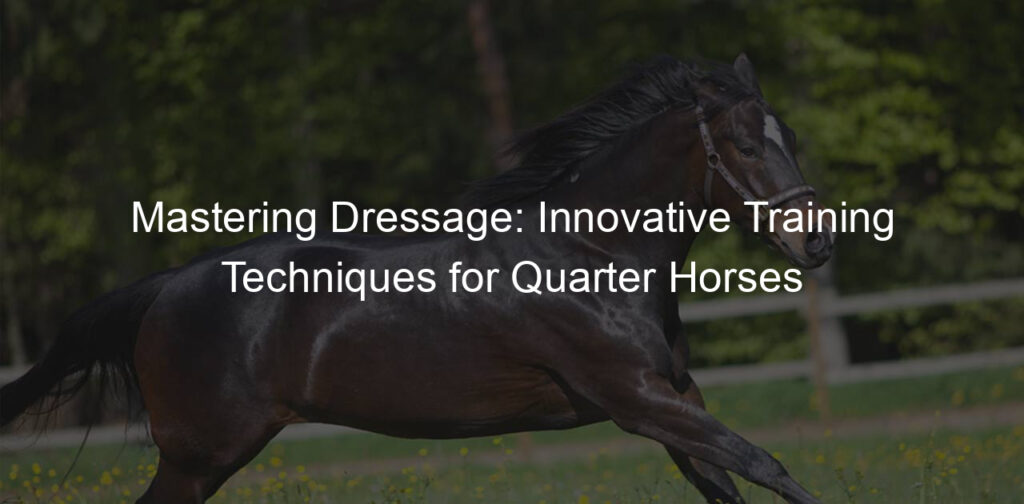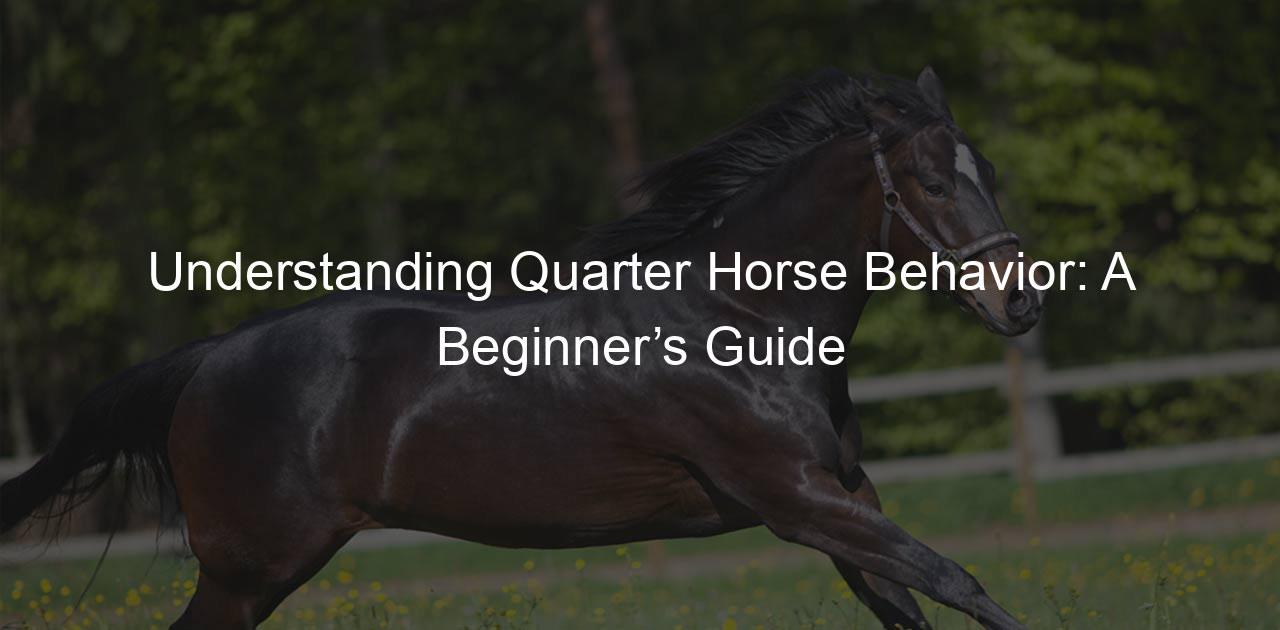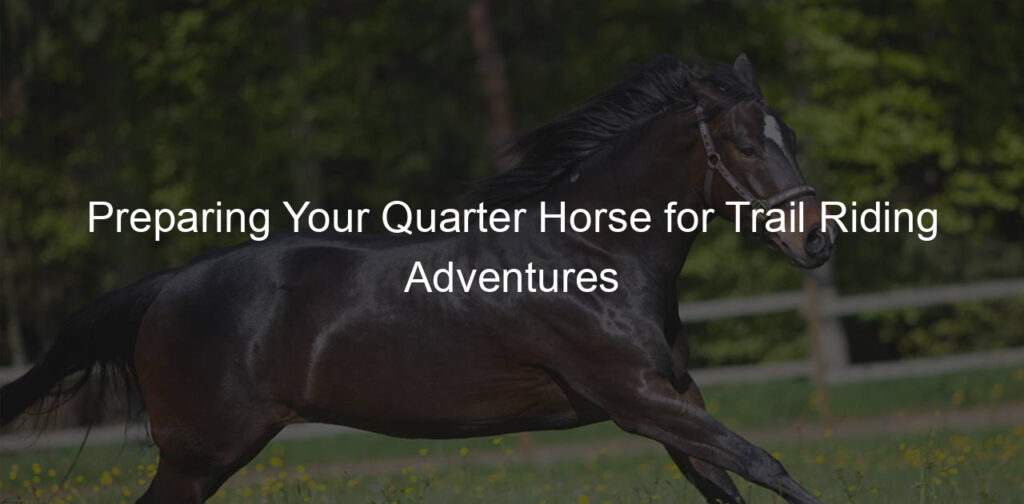Introduction to Dressage and Quarter Horses
Hey there, horse lovers! Today, we’re going to dive into the fascinating world of Dressage and Quarter Horses. So, saddle up, and let’s get started!
- Understanding the basics of Dressage
- Introduction to Quarter Horses
- The significance of Dressage in Quarter Horse training
Dressage, pronounced as “dreh-sahzh”, is a French term meaning “training”. It’s a highly skilled form of riding performed in exhibition and competition. It’s all about the harmony between the horse and the rider. The rider guides the horse through a series of complex maneuvers by slight movements of the hands, legs, and weight. To learn more about Dressage, check out this Wikipedia article.
Now, let’s talk about Quarter Horses. These horses are America’s pride and joy! Known for their agility and speed, they are often used in races and rodeos. But they’re not just about speed; they’re also very versatile and can be trained for various equestrian activities, including Dressage. To know more about Quarter Horses, here’s a link to their Wikipedia page.
Dressage plays a crucial role in Quarter Horse training. It helps in developing the horse’s flexibility, responsiveness, and balance. It also enhances the bond between the horse and the rider, making them move as one. Training a Quarter Horse in Dressage can be a game-changer, turning an ordinary horse into a star performer!
Stay tuned as we explore more about the essential Dressage techniques for Quarter Horses in our next section. Happy riding!
Essential Dressage Techniques for Quarter Horses
Whether you’re a seasoned horse rider or a newbie, mastering dressage techniques is crucial to forming a strong bond with your Quarter Horse. Let’s dive into some basic dressage techniques that can help you and your horse work as a team.
Basic Dressage Techniques
Before we get into the nitty-gritty of advanced techniques, it’s important to have a solid foundation. Here are a couple of basic dressage techniques that every Quarter Horse rider should know:
- Quarter Horse riding techniques: The basics
- Training a Quarter Horse: First steps in Dressage
First things first, you need to understand your Quarter Horse’s natural movements. This breed is known for its agility and speed, so it’s important to learn how to ride in a way that complements these traits. Start by mastering the walk, trot, and canter. These are the three basic gaits that you’ll use in dressage. Remember, practice makes perfect! The more you ride, the better you’ll get at understanding your horse’s movements and cues.
Once you’ve got the basics down, it’s time to start training your Quarter Horse in dressage. Start with simple exercises like circles and serpentines to help your horse learn balance and rhythm. It’s also important to work on transitions between gaits. This helps your horse understand your cues and builds their strength and flexibility. Remember, patience is key! Dressage training takes time and consistency, so don’t rush the process.
Mastering these basic dressage techniques will set you and your Quarter Horse up for success. Once you’ve got these down, you can start exploring more advanced techniques. Happy riding!
Advanced Dressage Techniques
Hey there, horse lovers! Ready to take your Quarter Horse dressage skills to the next level? Let’s dive right in!
- Advanced dressage techniques for Quarter Horses
- Extended trot: This is a powerful trot where the horse covers as much ground as possible. It’s all about balance and rhythm!
- Piaffe: This is a high-level dressage movement where the horse trots in place. It takes a lot of practice, but it’s a real crowd-pleaser!
- Passage: This is a slow, elevated trot that requires a lot of strength and balance from your horse. It’s a beautiful sight when done right!
- Mastering complex movements in Dressage
- Practice makes perfect: The more you practice, the better you’ll get. Set aside regular training sessions and stick to them.
- Patience is key: Don’t expect to master these movements overnight. It takes time and patience, but the results are worth it!
- Get professional help: If you’re struggling, don’t be afraid to ask for help. A professional dressage trainer can provide valuable insights and tips.
Quarter Horses are known for their agility and speed, which makes them perfect for advanced dressage techniques. Here are a few tips to help you get started:
Remember, these techniques take time and patience to master. Don’t rush your horse and always reward them for their hard work!
Mastering complex movements in dressage is all about understanding your horse and working together as a team. Here are some tips to help you out:
Remember, dressage is a journey, not a destination. Enjoy the process and celebrate every little victory along the way!
So there you have it, folks! Some advanced dressage techniques for your Quarter Horse. Remember, practice makes perfect and patience is key. Happy riding!
Dressage Training Tips for Quarter Horses
Training a Quarter Horse in dressage is a rewarding experience. However, it requires a lot of patience, understanding, and consistency. Here are some tips to help you get started:
- Creating a consistent training schedule
- Understanding your Quarter Horse’s unique needs
- Implementing Dressage exercises in your training routine
Consistency is key when it comes to horse training. It’s important to establish a regular schedule that your horse can get used to. This could mean training at the same time each day, or on the same days each week. Remember, it’s not about the amount of time you spend training, but the quality of that time. Even 15 minutes of focused, effective training can be more beneficial than an hour of unfocused, ineffective training.
Every horse is different, and Quarter Horses are no exception. They have their own personalities, strengths, and weaknesses. Some may be more energetic and need more physical exercise, while others may be more sensitive and require a gentler approach. Understanding your horse’s unique needs and tailoring your training approach to meet those needs can make a big difference in your dressage training success.
Dressage is all about precision, control, and elegance. Incorporating specific dressage exercises into your training routine can help your Quarter Horse develop the skills necessary for this discipline. This could include exercises like leg yields, shoulder-ins, and half-passes. Remember, it’s important to start with the basics and gradually introduce more complex exercises as your horse’s skills improve.
Remember, dressage training is a journey, not a destination. It takes time, patience, and a lot of hard work. But with consistency, understanding, and the right exercises, your Quarter Horse can become a successful dressage competitor.
Equestrian Training Techniques Beyond Dressage
While dressage is an essential part of equestrian training, there’s a whole world of other techniques that can help your Quarter Horse shine. One of these is jumping. Let’s dive into it!
Jumping Techniques
Jumping is not just about leaping over obstacles. It’s a complex skill that requires precision, timing, and trust between the horse and rider. Here’s an introduction and some training tips for jumping with your Quarter Horse.
- Introduction to jumping for Quarter Horses
- Training tips for jumping
- Start small: Begin with low jumps and gradually increase the height as your horse becomes more confident.
- Build trust: Spend time bonding with your horse. The more your horse trusts you, the more willing they will be to jump.
- Practice makes perfect: Consistent practice is key. Make sure your horse is comfortable with the jump before moving on to higher ones.
- Patience is key: Remember, every horse learns at their own pace. Be patient and celebrate every success, no matter how small.
Jumping is a thrilling part of equestrian sports, and Quarter Horses, known for their agility and speed, are excellent at it. The key to a good jump is a strong bond between horse and rider. The rider needs to guide the horse towards the jump, and the horse needs to trust the rider enough to make the leap. It’s a beautiful dance of trust and teamwork.
Training your Quarter Horse to jump can be a fun and rewarding experience. Here are some tips to get you started:
Remember, jumping is just one of the many equestrian training techniques beyond dressage. It’s a fun and exciting way to bond with your Quarter Horse and improve their agility and confidence. Happy jumping!
Endurance Training
Hey there, horse lovers! Let’s talk about something super important – endurance training for your Quarter Horse. Endurance training is all about building stamina and teaching your horse to maintain a steady pace over long distances. This can be a game-changer for your horse’s health and performance. So, let’s dive right in!
- Building Stamina in Your Quarter Horse
- Endurance Training Tips
Building stamina in your Quarter Horse is like training for a marathon. It’s not about speed, but about how long they can keep going. Start with short distances and gradually increase the length of your rides. Remember, it’s important to give your horse plenty of rest in between training sessions. And don’t forget to reward them with a tasty treat or a good grooming session after a hard day’s work!
Now, let’s look at some handy tips for endurance training. First, always warm up your horse before starting the training. This helps to prevent injuries. Second, mix up your training routine. Don’t just stick to long rides, include some short, fast rides as well. This will help to improve your horse’s overall fitness. Lastly, make sure your horse is well-hydrated and well-fed. A healthy horse is a happy horse!
Endurance training can be a fun and rewarding experience for both you and your Quarter Horse. Just remember to be patient and consistent. Happy riding!
Case Studies: Successful Quarter Horse Dressage Training
Let’s take a look at some real-life examples of Quarter Horses that have been successfully trained in Dressage. These case studies will give you a better understanding of the training process and the potential challenges that may arise.
-
Case Study 1: Transforming a novice Quarter Horse into a Dressage champion
Meet Star, a young Quarter Horse with no prior experience in Dressage. Star’s owner, a seasoned equestrian trainer, believed in Star’s potential and decided to train him in Dressage. The first step was to familiarize Star with the basic movements of Dressage, such as the piaffe and the passage. This was done gradually, ensuring Star was comfortable and confident with each new movement.
After several months of consistent training, Star began to show significant improvement. His movements became more fluid and he was able to perform complex Dressage routines with ease. Within a year, Star was competing in local Dressage competitions and impressing judges with his skill and grace. Today, Star is a Dressage champion, proving that with the right training and dedication, any Quarter Horse can excel in Dressage.
-
Case Study 2: Overcoming training challenges with innovative Dressage techniques
Next, we have Bella, a Quarter Horse who initially struggled with Dressage training. Bella’s trainer encountered several challenges, such as Bella’s difficulty in maintaining the correct posture and her reluctance to perform certain movements. Instead of giving up, the trainer decided to try innovative Dressage techniques.
One such technique was the use of positive reinforcement. Whenever Bella successfully performed a movement, she was rewarded with a treat. This motivated Bella to try harder and gradually, she began to improve. The trainer also incorporated fun activities into the training sessions to keep Bella engaged and interested.
Despite the initial challenges, Bella’s trainer remained patient and persistent. Today, Bella is a testament to the effectiveness of innovative Dressage techniques. She is now a successful Dressage horse, demonstrating that even the most challenging training obstacles can be overcome with creativity and determination.
These case studies show that with patience, dedication, and the right techniques, any Quarter Horse can be successfully trained in Dressage. Whether you’re a novice or an experienced equestrian, these stories can inspire you to reach new heights in your Dressage training journey.
Conclusion: The Impact of Effective Dressage Training on Quarter Horses
As we wrap up this informative journey, it’s crucial to reflect on the significant role that effective dressage training plays in the lives of Quarter Horses. Not only does it enhance their performance, but it also improves their overall health and well-being.
- Review of key takeaways
- The future of Dressage training for Quarter Horses
Throughout this blog post, we’ve learned that dressage training is an essential part of a Quarter Horse’s development. We’ve explored various techniques, from the basics like the dressage seat and leg yield, to more advanced moves like the piaffe and passage. We’ve also discovered that dressage training goes beyond just the physical; it’s about building a strong, trusting relationship between horse and rider.
Our case studies have shown us the transformative power of effective dressage training. We’ve seen how even the most challenging Quarter Horses can become graceful, agile performers with the right training and care.
Looking ahead, the future of dressage training for Quarter Horses is bright. With advancements in training techniques and a deeper understanding of horse psychology, we can expect to see even more impressive performances from our beloved Quarter Horses.
Furthermore, as more people recognize the benefits of dressage training, we hope to see an increase in the number of rescued Quarter Horses given a second chance at life through this beautiful equestrian art form.
So, whether you’re a seasoned equestrian or just starting your journey with Quarter Horses, remember that dressage training is more than just a sport. It’s a way to communicate with your horse, build trust, and create a bond that lasts a lifetime.









